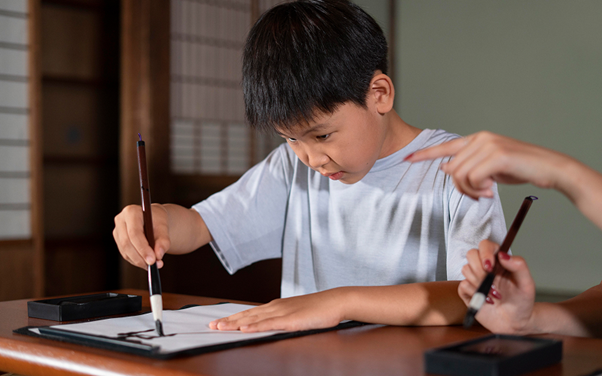Language learning is not only about memorising phrases and words. In the case of Mandarin, the written character plays a crucial part in comprehending the language and its culture comprehensively. While most students in Singapore use technology to type or identify Chinese characters, handwriting characters remains of immense importance. Whether a student at a tuition centre in Singapore or just seeking to enhance their language skills, there are good reasons to practice handwriting Chinese.
1. Improves Memory and Character Recognition
Handwriting Chinese characters involves more than one region in the brain. In contrast to typing, which is frequently dependent on predictive typing or input software, handwriting forces students to memorise every sequence of strokes and character form. This cognitive activity fortifies memory and enables students to recognise characters more readily when reading.
Research has indicated that kinaesthetic memory, i.e., learning by movement, enhances retention. Through the physical creation of each stroke, students develop a richer cognitive association with the character, resulting in greater recall. With repetition, this works to the advantage of students who are weak in reading comprehension and vocabulary.
2. Builds Stronger Language Foundation
For Chinese students taking tuition, learning written characters is a solid basis upon which to build overall language competence. Once pupils know the elements of a character, they are able to read unfamiliar words more easily. This enhances reading and writing as well as listening and speaking.
Most teachers think that it is more helpful for students to learn writing by hand because it promotes greater comprehension of grammar and sentence structure. It makes the students more comfortable with how the various characters merge to create phrases, and more secure in employing the language in school and everyday life.
3. Improves Focus and Discipline
Writing Chinese characters requires accuracy, scrutiny, and determined effort. Every stroke has to be written in a specific direction and sequence. This activity makes students more disciplined and concentrated in learning.
Since handwriting is slower than typing, it will tend to slow down the learning process, enabling students to think through each word and learn its meaning. For younger students, this can be particularly beneficial since they tend to learn best through guided, hands-on instruction. A well-organised Chinese tuition program would typically incorporate specific time for practice writing to impart these traits to students.
4. Fosters Cultural Appreciation
Chinese characters are not merely communication tools; they are works of art and cultural icons that have evolved over thousands of years. As students master handwriting, they become more attuned to the history and form of the language. They start to observe the beauty of brush strokes and appreciate calligraphy as a work of art.
Knowledge of the cultural value of characters can also raise motivation and interest. Increased appreciation often breeds an increased interest in the language so that students are inclined to further study or visit Mandarin-speaking countries.
5. Improves Academic Performance
For a student going to a tuition centre in Singapore, character practice writing by hand can be an exam game-changer. Compositions and comprehension exercises for school exams usually involve the writing or identification of a broad number of characters. Students who have practised and improved their handwriting are normally faster and more accurate when they do these exercises.
In addition, regular writing practice minimises the risk of confusing similar-looking characters, which is a frequent problem for learners. The ability to distinguish between characters with the same parts is important when one wants to perform well in written tests.
Conclusion
Although technology has opened the door to greater accessibility in learning a language, learning Chinese characters manually still has no substitute. Handwritten learning improves memory, increases comprehension, fosters discipline, and reinforces cultural values. These strengths are especially beneficial for Chinese tuition programme students around the island. If you or your child is looking for supplementary language assistance, contacting a reliable tuition centre in Singapore can be a good move toward achieving lasting results.
Contact Simply Education to find out more about how handwriting exercises can be included in an individualised Chinese study schedule.









